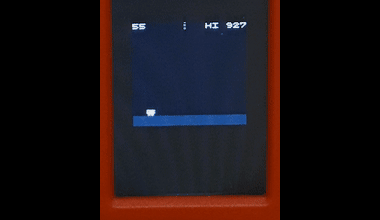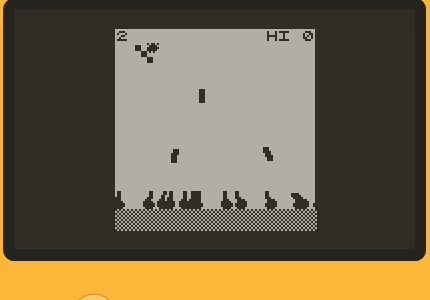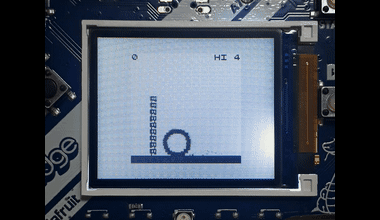Minimal C-lang library for creating classic arcade-like mini-games running on devices and browsers. Re-implemented version of crisp-game-lib for smaller devices. You can play sample games in your browser.
- M5StickC PLUS
- M5Stack BASIC
- Playdate (Download crisp-games.pdx.zip and sideload a game.)
- Adafruit PyBadge
- Arduboy
- ESP32-2432S028R
- ESPboy
-
Copy game_Template.c to
game[your game name].c -
Comment out other games in menuGameList.c and add
void addGame[your game name]();andaddGame[your game name]()...(snip)... void addGameReflector(); void addGame[your game name](); void addGames() { /*addGameThunder(); ...(snip)... addGameReflector();*/ addGame[your game name](); } -
Write your own game in
game[your game name].cand renamevoid addGame_Template() {tovoid addGame[your game name]() { -
Build for browser and debug
-
Once the game is complete, revert other games that were commented out in menuGameList.c and build it for other devices
-
Install LovyanGFX library
-
Create
cglp[target device]/directory (e.g.cglpM5StickCPlus/) -
Copy
cglp[target device].ino, ./src/lib/* and ./src/games/* files to the directory- cglpM5StickCPlus.ino
- cglpM5Stack.ino (ported by OBONO)
- cglpPyBadge.ino
-
Verify and upload
cglp[target device].inowith Arduino IDE
-
Copy ./src/cglpPlaydate directory
-
Create
cglpPlaydate/builddirectory -
Move to
cglpPlaydate/builddirectory andcmake .. -
Open
crisp-game-lib-portable.slnwith Visual Studio -
Build the solution (see Building for the Simulator using Visual Studio)
Note: Some features are limited due to device resource limitations.
- crisp-game-lib-arduboy (ported by OBONO)
- cglp-dentaroUI (ported by dentaro)
- cglpESPboy (ported by ESPboy)
-
Install Emscripten
-
Run
devnpm script to start the dev server and watch js files -
Run
dev_cnpm script to watch c files and build wasm files
- Hold down the A button and press the B button (M5StickCPlus, M5Stack)
- Press the SELECT button (PyBadge)
- Press A, B, Up and Right buttons simultaneously (Playdate)
- Press the X key while holding down the up and down arrow keys (Browser)
- Press the B button (M5StickCPlus)
- Press the C Button (M5Stack)
- Press the START button (PyBadge)
- Press the Z key while holding down the up and down arrow keys (Browser)
- (A) X key, (B) Z key, (left/right/up/down) arrow keys
The source codes for library and games are written device-independent. Besides, you need to implement device-dependent code for the following functions:
-
Device initialization function (e.g.
setup()in Arduino) that callsinitGame() -
Frame update function (e.g.
loop()in Arduino) that callssetButtonState()andupdateFrame()- The state of the button press must be notified to the library with the
setButtonState()
- The state of the button press must be notified to the library with the
-
Drawing and audio processing functions that are defined in machineDependent.h
md_getAudioTime()function should return the audio timer value in secondsmd_playTone(float freq, float duration, float when)function should play a tone withfreqfrequency,durationlength (in seconds) and staring fromwhenseconds on the audio timermd_drawCharacter(unsigned char grid[CHARACTER_HEIGHT][CHARACTER_WIDTH][3], float x, float y, int hash)function should draw the pixel art defined bygrid[y][x][r, g, b]at position (x, y). Sincehashwill be the same for the same pixel art, you can cache pixel art images usinghashas an index and avoid redrawing the same image
Sample device-dependent codes are cglpM5StickCPlus.ino and cglpPyBadge.ino.
You can use an AI chatbot to port game source code for crisp-game-lib to crisp-game-lib-portable. By providing the prompt and set of files to the chatbot, you can obtain the code ported to the C language. I have tried this using Claude 3 Opus, but it is expected to work to some extent with other LLMs as well. The ported code is not perfect, so it needs to be manually checked and corrected.


